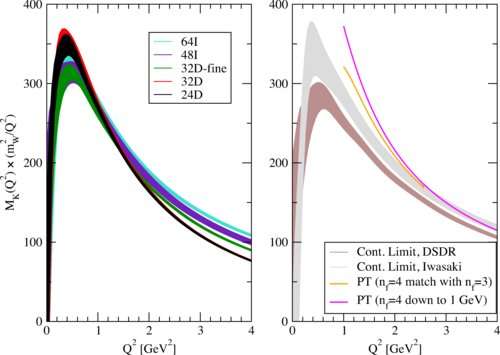Working to understand the changing flavors of quarks

Visible matter, or the stuff that composes the things we see, is made of particles that can be thought of much like building blocks made of more building blocks, ever decreasing in size, down to the sub-atomic level. Atoms are made of things like protons and neutrons, which are composed of even smaller building blocks such as quarks. Studying those smallest building blocks requires experimentation where atomic particles are accelerated and broken apart, then theoretical work to understand and describe what happened.
UConn Assistant Professor of Physics Luchang Jin studies particle and nuclear physics, and is working to understand more about subatomic particles and how they behave. Jin will be presenting recent findings at the 2021 Fall Meeting of the American Physical Society's Division of Nuclear Physics in October.
"The topic describes how quarks 'change flavors,' or transition, due to weak interactions," says Jin. "The Standard Model describes four types of interactions and weak interactions are one of them. We study the parameters that describe the transition probability."
Quarks can have six types of "flavors" or differences in mass and charge—up, charm, down, bottom, top, and strange—and understanding how they switch from one flavor to another, Jin says, can help us understand more about the inner workings of the universe.
Jin explains that this research is looking into the probability of up quarks transitioning into down quarks. The transition probability of this flavor change and the probabilities for up quarks transitioning to other quarks should add up to one, but they don't, and this deficit is intriguing.
"This could be indicating something, for instance that unfortunately we somehow didn't measure those values accurately enough," Jin says. "It could be indicating that there are some new particles that we don't know yet, and that will be very exciting. The work I'm trying to do is try to make sure that we measure those quantities accurately."
Jin says the experimental aspects of this work are in relatively good shape; the bottleneck, however, is with the theoretical aspect, which Jin is hoping to help solve by determining the relations between the quark transition probabilities from the experimental data of hadron transition probabilities.
Hadrons are a type of subatomic particle made of two or more quarks which are classified by the strength of their interactions with one another on a scale of "color charge." However, some color-charged particles cannot be studied under normal conditions and they are therefore referred to as "color confined." Due to the color confinement, experimentalists cannot isolate a free quark, the quarks always live inside color neutral hadrons.
By using an array of theoretical tools such as large-scale, lattice Quantum Chromodynamics (QCD) calculations, and the application of theory, such as the chiral perturbation theory, researchers work to better understand these relations in the experimental processes, says Jin.
"I'm working to determine the quark transitions probabilities from the experimental inputs. There are many different experimental inputs that one can use."
The researchers were able to solve one part of the puzzle by resolving uncertainty in the theoretical calculations which relate one experimental input to the desired quark transition probabilities.
"However, that experimental input itself is not very accurate," Jin says. "We resolved the theoretical part, but that hadron transition process is a little bit difficult for the experimentalists. If we really want to determine the quark transition probability from that process, we need to improve experimental precision by about tenfold. After this work, it will become a very clean process from the theoretical point of view."
At the APS meeting, Jin will present data exploring parameters of another flavor switch; this time, for how an up quark switches to a strange quark.
That work is similar, and the researchers were able to apply the same calculation and theory to determine the relevant low energy constants in chiral perturbation theory. "Now we know the low energy constants very well due to this calculation, but this does not solve the whole problem due to the limitation of the chiral perturbation theory."
Jin will also be presenting newer data for ongoing work, including innovations to account for photons which possess properties that can lead to difficulties in calculations, reduction in precision, and systematic error,
"We are trying to do the lattice calculation in a different way to completely avoid these issues from chiral perturbation theory," says Jin.
The work for more precision continues to understand the flavors and forces that hold visible matter together, Jin says.
"This is ongoing work and naturally to proceed, one cannot wait to try to solve the other problems. This work is the frontier of our understanding of nature."
More information: Peng-Xiang Ma et al, Lattice QCD calculation of the electroweak box diagrams for the kaon semileptonic decays, Physical Review D (2021). DOI: 10.1103/PhysRevD.103.114503
Xu Feng et al, First-Principles Calculation of Electroweak Box Diagrams from Lattice QCD, Physical Review Letters (2020). DOI: 10.1103/PhysRevLett.124.192002
Journal information: Physical Review D , Physical Review Letters
Provided by University of Connecticut




















